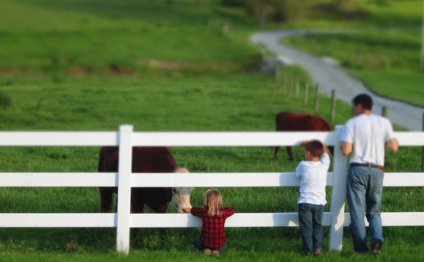
Grass-fed pasture raised beef
 Pasture-raised… Grass-fed.
Pasture-raised… Grass-fed.
Both many delightful phrases in pet farming. They conjur images of cows cavorting through industries, pigs let loose within the woods, lambs bouncing across hillsides… bliss.
However when you’re in the grocery store on a hectic Tuesday night — not very blissful. You notice both pasture-raised and grass-fed steak for sale, and also you understand both of these choices are a big enhancement over factory farmed steak. But what type should you purchase?
Or you are within local farmers’ marketplace and you also ask among the farmers when they offer grass-fed pork. The farmer chuckles and kindly corrects you — “You imply pasture-raised chicken, right?” — and you’re even more perplexed.
Here’s a straightforward solution to understand the essential difference between the two terms: “grass-fed” means exactly what a pet eats (grass); “pasture-raised” relates to in which it eats (on a pasture). So if it's crucial that you you that a cow ate the foodstuff it evolved to consume, which can be lawn — and consumed little or no whole grain — after that grass-fed steak is actually for you. If it’s crucial that you you that the cow cavorted outside in its surrounding, after that pasture-raised steak is for you.
Okay, however, if pasture has actually lawn upon it, why isn’t a pasture-raised cow instantly a grass-fed cow? Because a pasture-raised cow might-be provided grain by a farmer, especially in winter months if the farm is in a cold weather where snow addresses the pasture. Having said that, a pasture-raised cow could possibly be grass-fed, but only if its diet for some of its life had been grass.
And why isn’t a grass-fed cow automatically a pasture-raised cow? Because a cow is housed indoors all its life and start to become fed grass (in the shape of hay). This will be pretty unusual, though — most cows that are marketed as grass-fed invested a substantial time outside on pasture.
 (how about the farmer whom corrects you once you require “grass-fed pork”? Well, pigs can’t survive only on grass — they need some whole grain within their diet, because do birds — which is why you won't ever see “grass-fed pork” or “grass-fed chicken” on any packaging. You merely see grass-fed beef, lamb, and goat, mainly because pets eat just lawn. You do see “pasture-raised chicken” and “pasture-raised chicken, ” because pets on pasture may have their diet supplemented with whole grain.)
(how about the farmer whom corrects you once you require “grass-fed pork”? Well, pigs can’t survive only on grass — they need some whole grain within their diet, because do birds — which is why you won't ever see “grass-fed pork” or “grass-fed chicken” on any packaging. You merely see grass-fed beef, lamb, and goat, mainly because pets eat just lawn. You do see “pasture-raised chicken” and “pasture-raised chicken, ” because pets on pasture may have their diet supplemented with whole grain.)
Exactly what else should you realize about grass-fed vs. pasture-raised? Ask the 100% concern. Would you like 100per cent grass-fed beef? A product may state “grass-fed” on the packaging, nevertheless cow might-have-been “finished” on grain, meaning it ate grain over the last a few months of its life. Choose products labeled “100% grass-fed beef” if it’s what you would like.
And do you want 100per cent pasture-raised pork? It’s difficult to find this, particularly in north climates. Ask a farmer the length of time their pastured creatures tend to be outside through the 12 months, and what their particular interior circumstances are just like.
Indeed, that is all tremendously confusing. I really believe it is the outgrowth of good objectives, though — the individuals whom got those two labels into blood supply wished to highlight the unique way these animals are raised. (visit here to master just how these labels are enforced.)
With this particular information, however, you’ll ideally know what you’re buying the next occasion you’re in a store or at market. You'll be able to impress your pals whenever purchasing at a restaurant — or simply just get them therefore confused they order the tortellini.
Share this Post
Related posts
Reference Book
Whom received? what questions to ask a guy how much marketing manager make how many working days in a month? who developed…
Read MoreWhat is interesting about Texas
The second largest state in the US, Texas - the Lone Star State - has a wealth of natural assets and cultural attractions…
Read More










